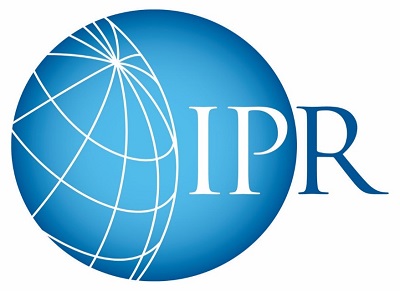What is the full form of IPRIPR: Intellectual Property RightsIPR stands for Intellectual Property Rights and includes creative conceptions, innovations, industrial models, trademarks, melodies, books, symbols, names, brands, etc., that result from the human brain. Like other property rights, intellectual property rights are a form of property. They enable the owner to fully profit from the creation of the thing that began as a concept and eventually crystallized. They also provide them the right to stop others from utilizing, interacting with, or tampering with their product without first getting their consent. In reality, they have the right to sue them, order them to cease, and have them pay for any damages 
The IPR's PastThe idea of IPR is not new. It is thought that the first instance of IPR emerged in North Italy during the Renaissance. A statute governing patent protection was published in Venice in 1474 and gave the proprietor an exclusive right. The copyright was first used in 1440 AD. When Johannes Gutenberg created the first printing press with interchangeable/movable metal or wooden letters. Several nations recognized the need to establish legislation governing IPR toward the end of the 19th century. Two conventions that form the basis of the IPR system have been ratified worldwide: The Berne Convention for the Protection of Literary and Artistic Works and The Paris Convention for the Protection of Industrial Property. Rights to Intellectual Property ProtectionIPR protection does not imply intellectual property monopoly because it enables the inventor, brand owner, patent holder, and copyright holder to profit from their labor, investment, and work. These rights are outlined in the International Declaration of Human Rights, which also guarantees the right to protect the physical and moral interests deriving from the right holder's labor, whether a literal or artistic creation. What Distinguishes Counterfeiting from a Forgery?A trademark is considered forged if it has been completely transferred from the original brand or if its essential components have been transferred, making the forged brand nearly comparable to the original. Making a brand substantially similar to the original one in a way that could mislead the public about the origin of goods that the brand in the issue marks is known as trademark infringement. Intellectual property includes things like designs for industrial products, literary and artistic creations, symbols, names, and pictures. There are two types of Intellectual PropertyPatented inventions, trademarks, industrial designs and models, and geographic source designations all fall under the category of Industrial property. Copyright covers a variety of literary and artistic creations, such as stories, poems, plays, movies, musicals, cartoons, pictures, photos, statues, and architectural plans. In copyright law, the term "Related Rights" refers to the rights of artists in their public performances, record companies' rights in their recordings, and broadcasters' rights in the content they transmit on radio and television. How do Trademarks Work?A trademark is a symbol to differentiate a certain enterprise's products or services from rival businesses. A trademark must be distinctive and not misleading, illegal, or immoral to be legally protected. How do Patents Work?A patent is an exclusive privilege provided by the law to an inventor or assignee to prevent others from financially exploiting their patented creation without permission, for a set amount of time, in exchange for a thorough public disclosure of the innovation. Describe a Trading NameA name that specifically sets one company apart from others is known as a trading name or business name. What is a Trade Secret?A trade secret is any important commercial information that is kept private about production or sales operations. The owner of a trade secret is obligated to take reasonable measures to preserve its confidentiality. What is a Copyright?IPR that focuses on safeguarding works of human intelligence is known as copyright. Literary and artistic works, including plays, songs, and works of fine art like paintings and sculptures, as well as technological works like computer programs and electronic databases, fall under the purview of copyright. How do Related Rights work?Rights that resemble copyright are referred to as Related Rights or Neighboring Rights. Related rights are meant to defend the legal rights of specific people, mainly performers, producers, and broadcasters, and to support them in spreading their messages to the general public. Techniques for Forgery and CounterfeitingDepending on the nature and type of the goods, the perpetrator's methods, tools, facilities, counterfeiting, and fraudulence strategies vary. Diverse fraud and counterfeiting methods are used to imitate an original product purportedly. According to the following, technology plays a significant role in producing counterfeit products strikingly similar to genuine ones, making it more difficult to tell them apart:
Next TopicFull Form
|
 For Videos Join Our Youtube Channel: Join Now
For Videos Join Our Youtube Channel: Join Now
Feedback
- Send your Feedback to [email protected]
Help Others, Please Share










